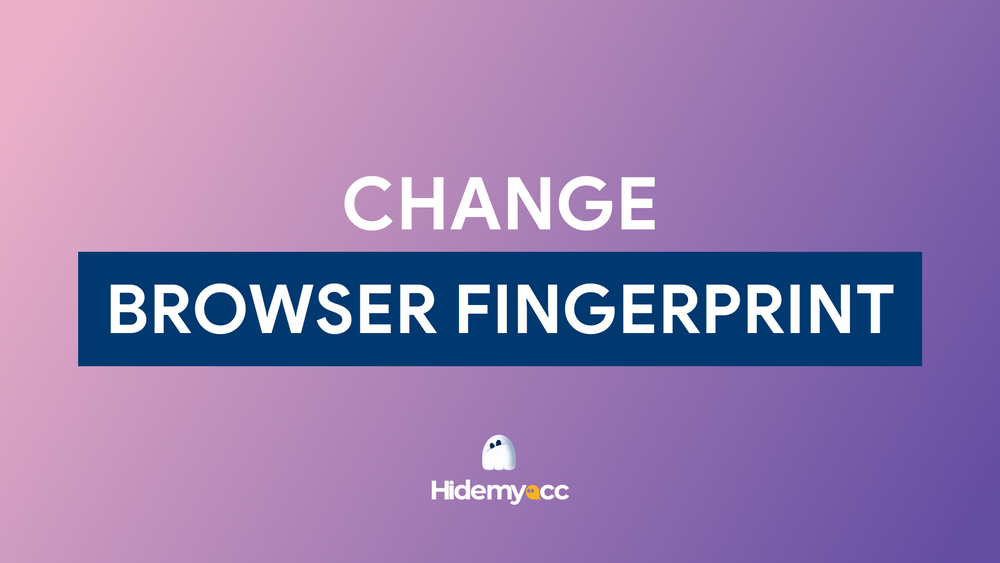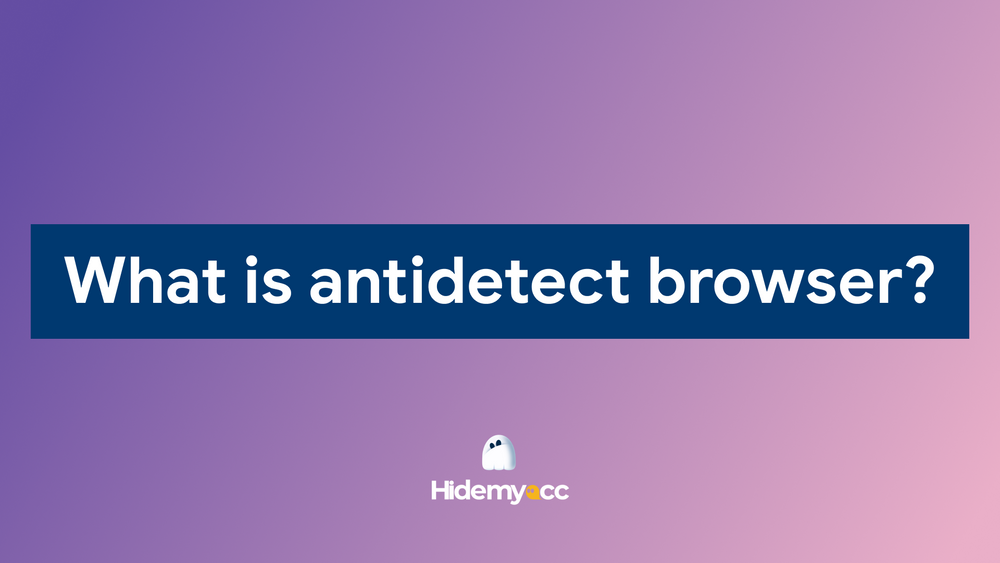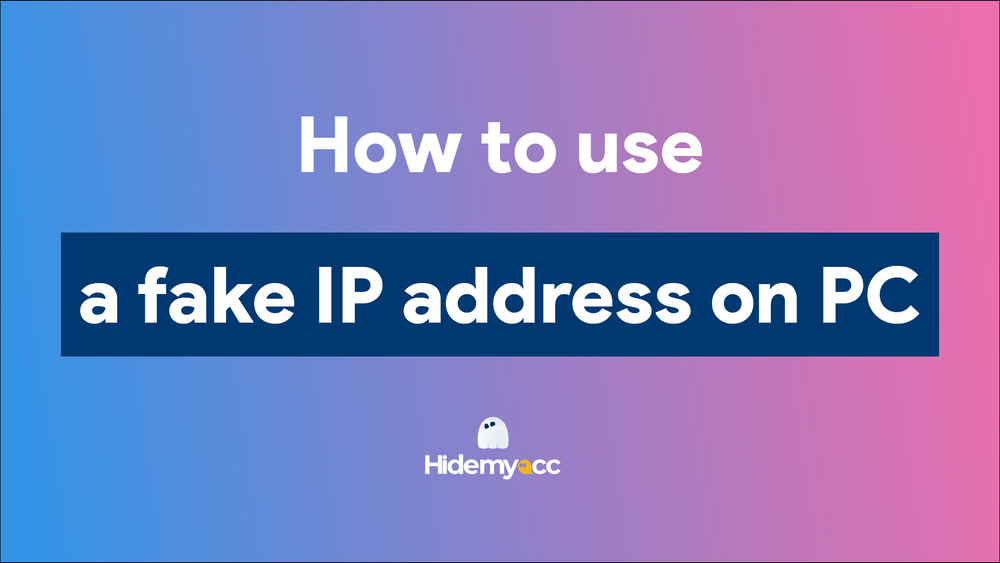In browser fingerprint post, we have found out that a browser fingerprint is the collection of information that websites use to track our identity. But do you know what kind of information your fingerprint is used to reveal about you?
Of course, that would depend on which websites you are accessing. Each website requires different amounts and types of information. But there are some common data points that websites often use to track your activity and behavior across different sites and sessions.
In this article, I will introduce to you data points involving Browser parameters.
IP address
Every device that connects to the internet uses an IP address, a unique set of numbers that identifies the device and allows it to communicate with other devices on the network. An IP address is a unique identifier for a device on the internet or a local network.
The acronym "IP" stands for "Internet Protocol," which is the set of rules that governs the format of data sent via the internet or a local network. These IP addresses can be either static or dynamic, with static addresses remaining constant and dynamic addresses changing periodically.
Additionally, IP addresses can be either public or private, with public addresses being used to communicate with devices outside of a private network and private addresses being used for communication within a private network.
Geolocation
Geolocation uses the IP address of a visitor to determine their approximate location on a city level. This allows websites and other online services to provide location-specific content and services to their visitors.
For example, a travel booking website could use geolocation to show personalized recommendations for local attractions or restaurants in the city where the visitor is located. While geolocation can provide accurate information in many cases, it is not always 100% precise and can be affected by factors such as the use of virtual private networks (VPNs) or proxy servers.
Time zones
Similar to Geolocation, websites can use your browser fingerprint to identify and compare your system and browser time zones. The time zone of your browser is determined by the difference in hours between your current local time and Coordinated Universal Time (UTC), which is the global time standard.
The time zone information can be collected by websites through your browser's Date object, which returns the current date and time in your local time zone. This information can be used to determine your geographic location or to track your activity across different time zones. Additionally, it can also be used to detect anomalies or suspicious activity, such as when your browser suddenly switches to a different time zone, which could indicate the use of a VPN or proxy server.
Timestamp
Timestamp reveals the time and date when you accessed the website. This information can be obtained through your browser's Date object, which provides details about the current date and time.
Timestamp information can be used by websites to track the user's activity and behavior over time, and to identify patterns or trends in the user's behavior.
Screen resolution
Screen resolution refers to the number of pixels that are displayed on a computer screen, typically expressed as the number of horizontal pixels multiplied by the number of vertical pixels. This information can be acquired by websites through your browser's window object, which provides details about your viewport size and screen resolution.
It can be used to identify your hardware configuration, which can help websites to tailor their content or user experience to the specific screen size. For example, a website might provide a larger font size or different layout for users accessing the site from a smaller screen.
Navigator objects
The Navigator object is a built-in object in the JavaScript programming language that provides information about your browser and device. It provides a wide range of properties and methods that can be used to gather your browser fingerprint, including user-agent, language, cookies, platform and plugins.
User-agent (UA) string
The User-Agent (UA) string is a string of text that is sent by your browser to the web server with every request, which identifies the browser and operating system that the user is using to access the website. The User-Agent string typically includes information such as the browser name and version, operating system name and version, and device type. It can also include additional information such as installed plugins and extensions.
Websites can use User-Agent string to tailor their content or user experience to the specific browser or operating system. For example, a website might provide a different download link or video format for users accessing the site from a particular browser.
Language settings
Language settings refers to the language that you have set as the default in your browser, which can indicate your location or preferred language. This information can be collected by websites through your browser's navigator object, which provides details about your device, including the language settings.
The language settings information can be used by websites to tailor their content or user experience to the specific language or location. For example, a website might provide a localized version of the site for users accessing the site from a particular language.
Cookies
Cookies are small text files that are stored on your device by a website. When you visit a website, the website can store information in a cookie on your device, and then retrieve that information when you visit the website again in the future.
Cookies are often used to track your behavior and preferences. Websites can use cookies to remember your login credentials, shopping cart contents, and browsing history. Cookies can also be used to track your activity across multiple websites.
While cookies are widely used for legitimate purposes, such as remembering a user's preferences or personalizing their experience on a website, they can also be used for tracking and advertising purposes. As a result, many web browsers offer options to limit or block cookies to protect user privacy.
Plugins
Plugins are software components that can be added to a web browser to enable additional functionality, such as displaying multimedia content, running Java applets, or providing security features. This information can be acquired through your browser's navigator object, which provides details about the user's device, including the installed plugins.
The plugins information can be used by websites to identify the user's software configuration and tailor their content or user experience to the specific plugins installed. For example, a website might provide a different download link or video format for users accessing the site with a particular plugin installed.
File format identifiers
File format identifiers are data points that can be used to uniquely identify your browser. These identifiers are based on the types of files that your browser is able to handle, such as image formats (JPEG, PNG, GIF, etc.), audio formats (MP3, WAV, etc.), video formats (AVI, MP4, etc.), and document formats (PDF, DOC, etc.).
Your browser's ability to handle these file formats is determined by the presence or absence of specific plugins, extensions or codecs, which can be detected by web servers through requests to your browser.
By analyzing the presence or absence of these file format identifiers in your browser, along with other browser characteristics such as the user agent string, screen resolution, installed fonts, and other attributes, websites can create a unique browser fingerprint that can be used to track you across multiple sites and sessions, even if cookies are cleared or blocked.
Extensions
Extensions refer to small software programs that can be added to your web browser to modify its functionality or behavior. This information can be gathered through your browser's extension APIs, which provide details about the installed extensions.
The extensions information can be used by websites to identify the user's software configuration and to tailor their content or user experience to the specific extensions installed. For example, a website might provide a different download link or video format for users accessing the site with a particular extension installed.
Canvas
Canvas fingerprinting is a technique used by websites to gather information about a user's web browser and device by exploiting the HTML5 canvas element. The canvas element is used to create graphics and animations on a webpage, and its unique rendering properties can be used to generate a unique identifier for a user's browser.
When a user visits a website that uses canvas fingerprinting, the website generates a small image with unique rendering properties specific to the user's browser and device. The website then sends this image to the user's browser, which creates a bitmap of the image based on the rendering properties of the user's device. This bitmap is then compared to a database of other bitmaps to generate a unique identifier for the user's browser.
Canvas fingerprinting is a form of browser fingerprinting, which is used by websites to track users across the internet, even if they delete cookies or use private browsing mode. It is considered a privacy concern because it can be used to track users without their knowledge or consent.
Tor browser
Tor Browser is a web browser designed to protect user privacy and anonymity online. It uses a combination of encryption and routing through multiple servers to conceal your IP address and location, making it difficult for websites to track your activity.
Tor Browser is designed to minimize your fingerprint, or unique identifying characteristics, in order to protect your anonymity. It accomplishes this by standardizing certain aspects of your platform, such as using a consistent screen resolution and font set across all users. Moreover, it also includes additional privacy features, such as blocking third-party cookies and scripts, and using HTTPS encryption whenever possible. These features help to further reduce your fingerprint and protect your privacy.
However, despite these efforts, Tor Browser is not completely immune to browser fingerprinting, and some techniques, such as canvas fingerprinting, can still be used to track you.
Browser local database
Browser local databases, also known as web storage, are a type of data storage that allows websites to store information on your device, such as login credentials, user preferences, and other types of data.
Local databases can be accessed by websites using JavaScript, and many modern browsers offer different types of local databases, such as cookies, local storage, and Indexed DatabaseAPI. These databases can be used for legitimate purposes, such as improving the user experience by remembering user preferences, or for less friendly purposes, such as tracking users for advertising purposes.
Conclusion
As I mentioned before, Hidemyacc can help you change all data points above for your new virtual profiles. Therefore, your original fingerprint will be protected from all types of browser fingerprinting. You can watch how Hidemyacc compared their altered parameters with the original computer here or continue with part 2 of this post.
Download Hidemyacc and start your 7-day trial now!
If you have any further questions, comments, or suggestions, feel free to contact us via Telegram, Skype, or Facebook Messenger support.






